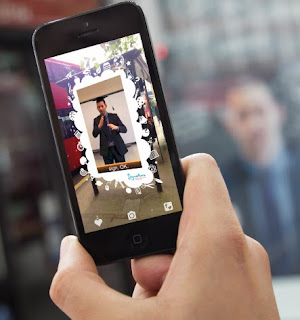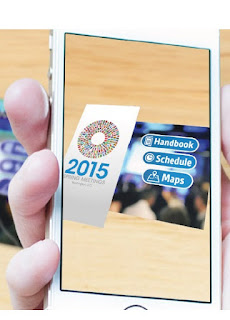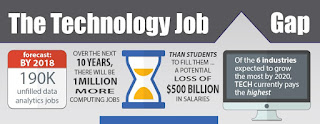I have always found the topic of mentors and mentorship
interesting. I think the idea of a person who helps another person grow and
develop in both big ways and small is quite fascinating, let alone extremely
important.
A mentor can be a boss or a co-worker often more senior and
experienced. A mentor can be a relative or a friend who provides us with his or
her unique perspective and ongoing guidance as we navigate not just our
professional careers but our lives.
I’d like to tell you briefly about a man I knew only for a
few weeks, but who has had a lifetime of influence on me simply because of who
he was and how he lived. I don’t know if technically that qualifies as a
mentor, but to me it certainly does.
 |
| John Malloy - 1988 |
His name was John Malloy and he lived in Melbourne,
Australia. I met John in 1988 during my one-year of traveling after graduating
from college. I was confused in that year. My mother had just died days before
my graduation.
I was unsure of just about everything in life, so I took off
to travel and managed to hitchhike the entire perimeter of Australia and travel
through South East Asia, India, Nepal, the Philippines and other amazing places.
I suppose I was as much running away from my life as I was
running blindly towards it. During that time, I met hundreds of amazing people,
but no one had more of an impact on me than John Malloy. He took me into his
home because when we met I was staying with his close friend who had just been
diagnosed with terminal cancer and given months to live.
John and his wife Maureen welcomed me into their home on
Kerferd Road in Glen Iris, Victoria. John and Maureen were the consummate hosts
to me – a complete stranger from America, wandering mostly directionless though
a completely foreign country on the other side of the world.
But it wasn’t just his hospitality. Speaking to John, it was
clear he loved life. A spry 64-year-old with an infectious smile, John was
cheerful, humble, optimistic and wise. As we sat in his kitchen enjoying long, delicious dinners accompanied
by wine, then coffee, I learned about John’s career as an engineer, the 7
children he and Maureen had raised and about Maureen’s research and writing
about traumatic brain injuries and the book that she’d just written and
published.
On May 20, 1988, here is what I wrote about John in my personal
journal – all 7 of which I have kept all these years with their often
microscopic cursive writing covering thousands and thousand of pages.
Staying
with John Malloy was a great time – very relaxed and fulfilling. I learned a
great deal from John as we spent the day setting fire to rubbish on his cattle
paddock. He reckoned I was quite good at burning rubbish, a compliment I took
well. John is a very wealthy man
who has put his wealth into his children’s educations rather than into himself.
He drives a small, old car, lives in a pleasant, reasonable home. All the comforts
are there, but nothing extravagant, save the maybe hundreds of bottles of wine
stacked in their boxes in his study by the kitchen. He worked for 30 years as
an engineer with Mobil Oil in Melbourne. He was stationed in the South Pacific
and in France during his 30 years and now, at 64, is retired. His wife,
Maureen, is a psychologist, working with patients who have suffered head
injuries. She has just recently finished a book along with a co-worker of hers.
John
and I sat in his paddock on the damp grass and watched the dead branches and
twigs burn. We talked about scores of things, tossing bits of twigs into the
flames, getting up occasionally to turn the unburned end of a log into the
center of the fire. I envied John a great deal for the way he lived his life;
that, I think, is the deepest form of respect one can offer. He purchased a
chunk of land east of the city near the Dandenong Mountains 25 years ago and
has used the money it has amassed for tuition expenses.
As a parent now of two young girls, I find myself thinking
about that day I spent in John’s paddock burning twigs and branches. John was a
man with his priorities straight. It was clear to me. I can remember looking
over at him through the crackling orange flames as he sat opposite me on a
rock. I remember thinking about what it must be like to raise 7 children, to
pay for all that education, to be in love with a woman and married for over 30
years.
 |
| Me atop Uluru or "Ayers Rock" in Australia |
John taught me something about happiness and success all
those years ago. I was 22 years old and over the past 28 years of my life, I
still recall vividly how he lived his life, his family-focused priorities and
the kindness he showed me as a complete stranger.
All these years later, I have come to discover that while
John was a remarkable man, his wife Maureen was perhaps even more remarkable. I
recalled talking to her about her work. She had graduated from the University
of Sydney with a science degree, the only female in her class. She gave birth
to 7 children between 1951 and 1963. Her youngest, Robert, had severe
intellectual disabilities and this prompted her return to school in the 1970s to
study the brain at the University of Melbourne.
Maureen went on to become an internationally renowned
psychologist and one of Australia's pioneers in the assessment of brain
injuries and in the practice of forensic neuropsychology. I didn’t know this in
1988, of course, eating her delicious lamb stew, talking, laughing and toasting
over dinner. She could not have been more humble and wonderful.
 |
| Maureen Malloy |
I discovered the details of her career as I thought about
John, wondering if he was still around and what he was doing. He’d be 91 years
old now I believe. Through a quick Google search, I saw that sadly Maureen died
on May 21, 2011. Her obituary was touching and revealing of what an amazing
person she was.
John chose well. For that matter, she did as well. I hope to
track down John to express my thanks for the lessons he taught me in that
wonderful, tumultuous year of my young life.
I certainly hope I can find him. I will let you know what
happens.
















